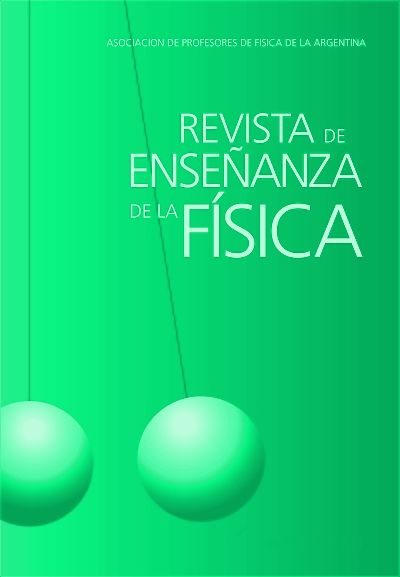An ausubelian approach for teaching electromagnetism in the causal interpretation
DOI:
https://doi.org/10.55767/2451.6007.v35.n2.43737Keywords:
Ausubelian theory, Causal interpretation of electromagnetism, Tesla coil, Advance organizersAbstract
We present the main ideas associated with a proposed Ausubelian approach to teaching of the phenomenology and laws of electromagnetism, emphasizing their causal interpretation. The concepts of electrostatics, magnetostatics, electrodynamics, electromagnetic field and electromagnetic waves are progressively developed, assuming the central role of the concept of causality. By hypothesis, the principle of causality should function as an Ausubelian key which, acting as part of (potential) subsumption structures, we assume to be, in this context, effective in achieving what Ausubel understood as meaningful learning. To this end, we propose the use of a set of teaching instruments based on four experiments: the Van de Graaff generator/electroscope, the electromagnet/magnetoscope, the Faraday's experiment and the Tesla coil. These experiments should be represented by their respective experimental conceptual diagrams. These, in turn, should be constructed based on theoretical conceptual diagrams, developed to structure electromagnetism according to causal interpretation. Specific parts of these teaching instruments can also be interpreted as advance organizers, depending on the objectives and circumstances in which they be used.
References
Ausubel, D. P. (2000). The acquisition and retention of knowledge: a cognitive view. Dordrecht, The Netherlands: Springer Science+Business Media.
Bruns, D. G. (1992). A solid-state low voltage Tesla coil demonstrator. Am. J. Phys, 60(9), 797-803.
Chiquito, A. J., Lanciotti, F. (2000). Bobina de Tesla: dos Circuitos Ressonantes LC aos Princípios das Telecomunicações. Rev. Bras. Ens. Fís., 22(1), 69-77.
Duarte, I. S. R. (2019). Geração e Detecção de Campos Eletromagnéticos por meio da Bobina de Tesla: uma Proposta de Ensino a Partir de Organizadores Avançados Ausubelianos. Dissertação (Mestrado Profissional em Ensino de Física) – Instituto de Física, Universidade de Brasília, Brasília. Disponível em: https://repositorio.unb.br/handle/10482/37448.
Griffiths, D. J. (2013). Introduction to Electrodynamics (4o ed.). London: Pearson Education.
Kinsler, P. (2011). How to be causal: time, spacetime, and spectra. Eur. J. Phys, 32(6), 1687-1700.
Kinsler, P. (2015). Causal diagrams for physical models. arXiv: 1509.01491v1.
Kinsler, P. (2020). Faraday’s Law and magnetic induction: cause and effect, experiment and theory. Physics, 2(2), 150-163.
Laburu, C. E., Arruda, S. M. (1991). A construção de uma bobina de Tesla para uso em demonstrações na sala de aula. Cad. Cat. Ens. Fís., 8(1), 217-226.
Maudlin, T. (2012). Philosophy of Physics: Space and Time. Princeton, USA: Princeton University Press.
Purcell, E. M., Morin, D. J. (2013). Electricity and Magnetism (3o ed). New York, USA: Cambridge University Press.
Savage, C. (2012). Causality in Classical Electrodynamics. Phys. Teacher, 50, 22-228.
Skeldon, K. D., Grant, A. I., Scott, S. A. (1997). A high potential Tesla coil impulse generator for lecture demonstrations and science exhibitions. Am. J. Phys., 65(8),744-754.
Thompson, M. T. (1999). Inductance calculation techniques part II: approximations and handbook methods power control and intelligent motion. Power Control and Intelligent Motion, 25(12), 44-45.
Tilbury, M. (2008). The ultimate Tesla Coil design and construction guide. New York, USA: McGraw-Hill.
Villalba, J. M., Ferreira, L., Arribas, H., Nájera, A, Beléndez, A. (2015). Estudio experimental de la inducción electromagnética entre dos bobinas: dependencia con la corriente eléctrica. Rev. Bras. Ens. Fís., 37(1), 1313-1-7.
Weinberg, S. (1972). Gravitation and Cosmology: principles and applications of the general theory of relativity. New York, USA: John Wiley & Sons.
Wheeler, H. A. (1928). Simple Inductance Formulas for Radio Coils. Proc. Inst. Radio Engineers, 16(10), 1398-1400
Downloads
Published
Issue
Section
License

This work is licensed under a Creative Commons Attribution-NonCommercial-NoDerivatives 4.0 International License.
Aquellos autores/as que tengan publicaciones con esta revista, aceptan los términos siguientes:Los autores/as conservarán sus derechos de copiar y redistribuir el material, bajo los términos estipulados en la Licencia de reconocimiento, no comercial, sin obras derivadas de Creative Commons que permite a terceros compartir la obra bajo las siguientes condiciones:
- Reconocimiento — Debe reconocer adecuadamente la autoría, proporcionar un enlace a la licencia e indicar si se han realizado cambios. Puede hacerlo de cualquier manera razonable, pero no de una manera que sugiera que tiene el apoyo del licenciador o lo recibe por el uso que hace.
- NoComercial — No puede utilizar el material para una finalidad comercial.
- SinObraDerivada — Si remezcla, transforma o crea a partir del material, no puede difundir el material modificado.
- Los autores/as podrán adoptar otros acuerdos de licencia no exclusiva de distribución de la versión de la obra publicada (p. ej.: depositarla en un archivo telemático institucional o publicarla en un volumen monográfico) siempre que se indique la publicación inicial en esta revista.
- Se permite y recomienda a los autores/as difundir su obra a través de Internet (p. ej.: en archivos telemáticos institucionales o en su página web) antes y durante el proceso de envío, lo cual puede producir intercambios interesantes y aumentar las citas de la obra publicada. (Véase El efecto del acceso abierto).










